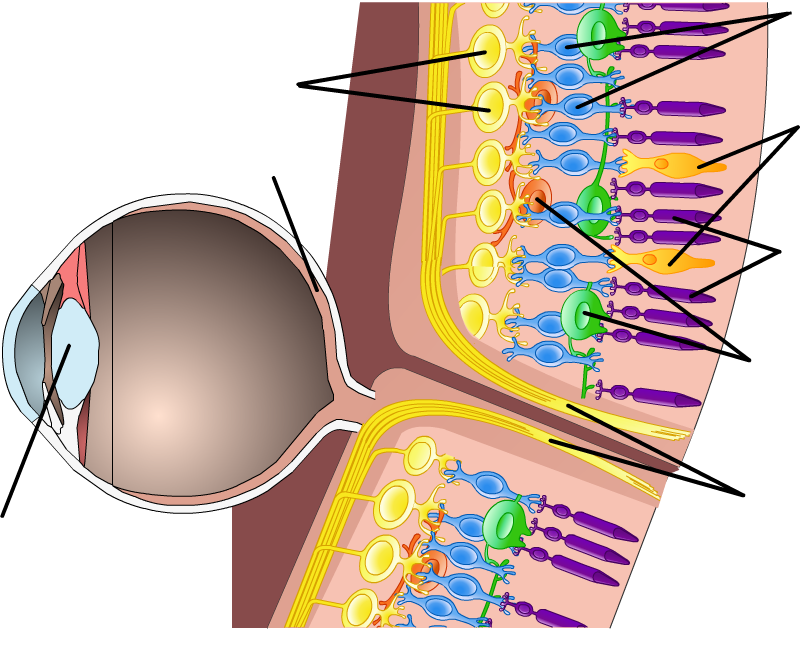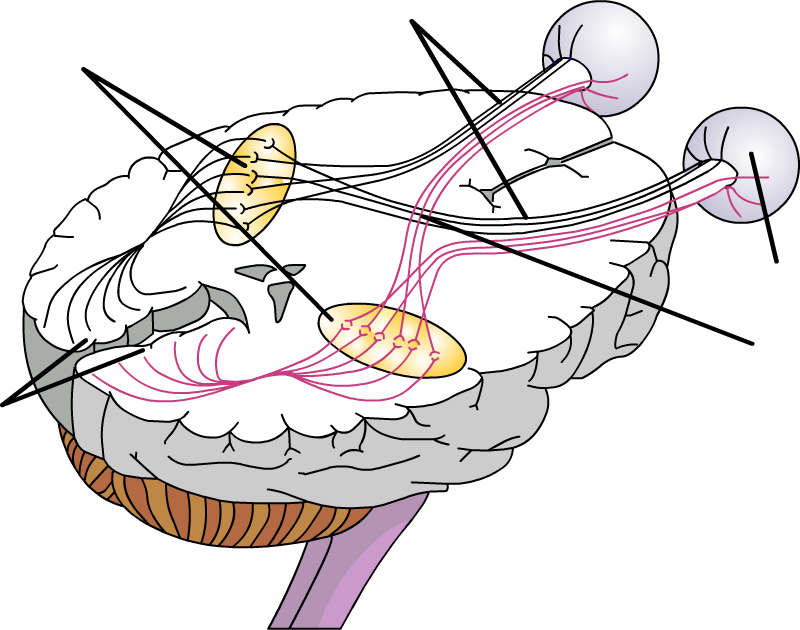Chapter 27. The Visual Pathway
Introduction

Name the major structures of the visual system.
Understand the role that each structure plays in transmitting visual information.
Review
Review
Select the NEXT button to continue with the Review.

1. The visual pathway consists of all the structures in the visual system, from the eyes at the front of the head to the visual cortex, located in the brain’s occipital lobes at the back of the head. Let’s take a quick tour of this pathway.
Review
Review
Select the NEXT button to continue with the Review.

2. Light from the outside world passes through the cornea and then through the pupil, the opening in the ring of muscle called the iris. The lens focuses the light on the retina, where the process of seeing actually begins.
Review
Review
Select the NEXT button to continue with the Review.

3. The retina contains two types of photoreceptors: rods specialized for monochrome vision in dim light, and cones specialized for color vision in bright light. The photoreceptors capture the light energy and convert it to neural impulses. These signals are passed through the bipolar cells to the ganglion cells, whose axons form the optic nerve.
Review
Review
Select the NEXT button to continue with the Review.

4. The visual information leaves the eye on the optic nerve and travels to the optic chiasm, where the signals from the portion of the retina nearest the nose cross to the other side of the brain.
Review
Review
Select the NEXT button to continue with the Review.

5. The optic chiasm separates the visual information from each side of the retina. The visual area of the thalamus then relays the information to the visual cortex, which processes the information and constructs a representation of the visual world. At this point, the person “sees” the light.
Practice 1: Light Enters the Eye
Practice 1: Light Enters the Eye
Select the PLAY button to view the first stage of the visual pathway.
Practice 2: Events in the Retina
Practice 2: Events in the Retina
Select the PLAY button to view the second stage of the visual pathway.
Practice 3: Impulses Travel to the Brain
Practice 3: Impulses Travel to the Brain
Select the PLAY button to view the last stage of the visual pathway, as the impulses travel to the brain.
Quiz 1
Quiz 1
Drag each label to the line pointing to the appropriate structure. When all the labels have been placed, select the CHECK ANSWER button.

Quiz 2
Quiz 2
Drag each label to the line pointing to the appropriate structure. When all the labels have been placed, select the CHECK ANSWER button.

Quiz 3
Quiz 3
Match the terms for visual pathway structures with their functions by dragging each colored circle to the appropriate gray circle. When all the circles have been placed, select the CHECK ANSWER button.
Conclusion
